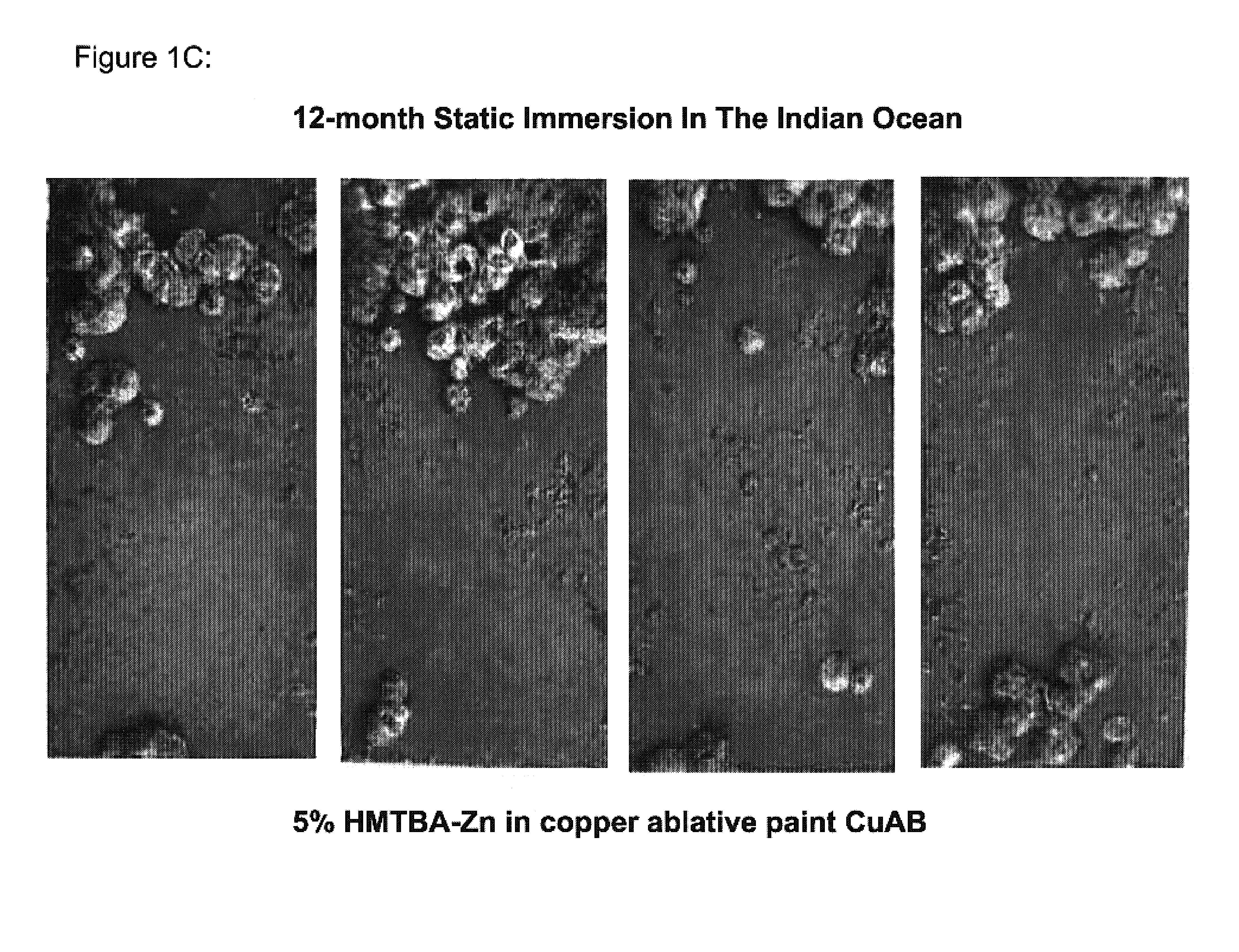Marine antifouling coating compositions
a technology of antifouling coating and composition, which is applied in the field of antifouling agents, can solve the problems of affecting the speed of the ship and its fuel efficiency, affecting the operation of the power generation and manufacturing process, and affecting the efficiency of the ship's fuel efficiency, so as to reduce the risk of biofouling and reduce the effect of toxic to the environmen
- Summary
- Abstract
- Description
- Claims
- Application Information
AI Technical Summary
Benefits of technology
Problems solved by technology
Method used
Image
Examples
example 1
Determination of EC50
[0122]The method of Rittschof et al. (Biofouling, 1992, Vol. 6, pp. 115-122) was followed to determine the EC50 (i.e., the antifouling agent concentration that can be expected to cause a defined effect in 50% of a given population of organisms under defined conditions) for barnacle cyprids. In this case, the defined effect is that the cyprids have not settled and have not attached to the Petri dish. Thus, in the attached data set, the “set” column indicates the total number of cyprid larvae that have settled and attached on the surface of the Petri dish and “non-set” indicates the total number of cyprids that remain swimming in the seawater and have not settled on the surface of the Petri dish.
[0123]Briefly, the barnacle adults are cultured in the laboratory and allowed to spawn naturally. The larvae are harvested and grown in artificial culture systems until they reach the cyprid stage at which time the larvae become competent to attach to surfaces. Once attac...
example 2
Fouling Tests
[0130]HMTBA-Cu and HMTBA-Zn were supplied in powdered form by Novus International. The powder as supplied was found too large in particle size (HMTBA-Zn and HMTBA-Cu had a mean particle size of about 450 μm and 350 μm respectively) to produce satisfactory dispersion in the paints and was further ground manually to break up the larger particles. The compounds (HMTBA-Cu and HMTBA-Zn) were added to copper self-polishing copolymer (CUSP) paints, copper ablative (CUAB) paint, copper-free self-polishing (MFSP) and copper-free ablative (MFAB) paints at concentrations of 1, 3, 5 and 10% (w / w). The formulated paints were applied on PVC test panels (3 inch by 10 inch, ⅛ inch thickness), allowed to dry and shipped to a marine research center at Sacred Heart Marine Research Centre (SHMRC) in Tuticorin, India. The panels were mounted on frames on a floating platform in the open ocean and submerged totally under 3 ft of seawater for a period of 6 months, 9, or 12 months.
[0131]After t...
PUM
| Property | Measurement | Unit |
|---|---|---|
| mean particle size | aaaaa | aaaaa |
| mean particle size | aaaaa | aaaaa |
| mean particle size | aaaaa | aaaaa |
Abstract
Description
Claims
Application Information
 Login to View More
Login to View More - R&D
- Intellectual Property
- Life Sciences
- Materials
- Tech Scout
- Unparalleled Data Quality
- Higher Quality Content
- 60% Fewer Hallucinations
Browse by: Latest US Patents, China's latest patents, Technical Efficacy Thesaurus, Application Domain, Technology Topic, Popular Technical Reports.
© 2025 PatSnap. All rights reserved.Legal|Privacy policy|Modern Slavery Act Transparency Statement|Sitemap|About US| Contact US: help@patsnap.com



